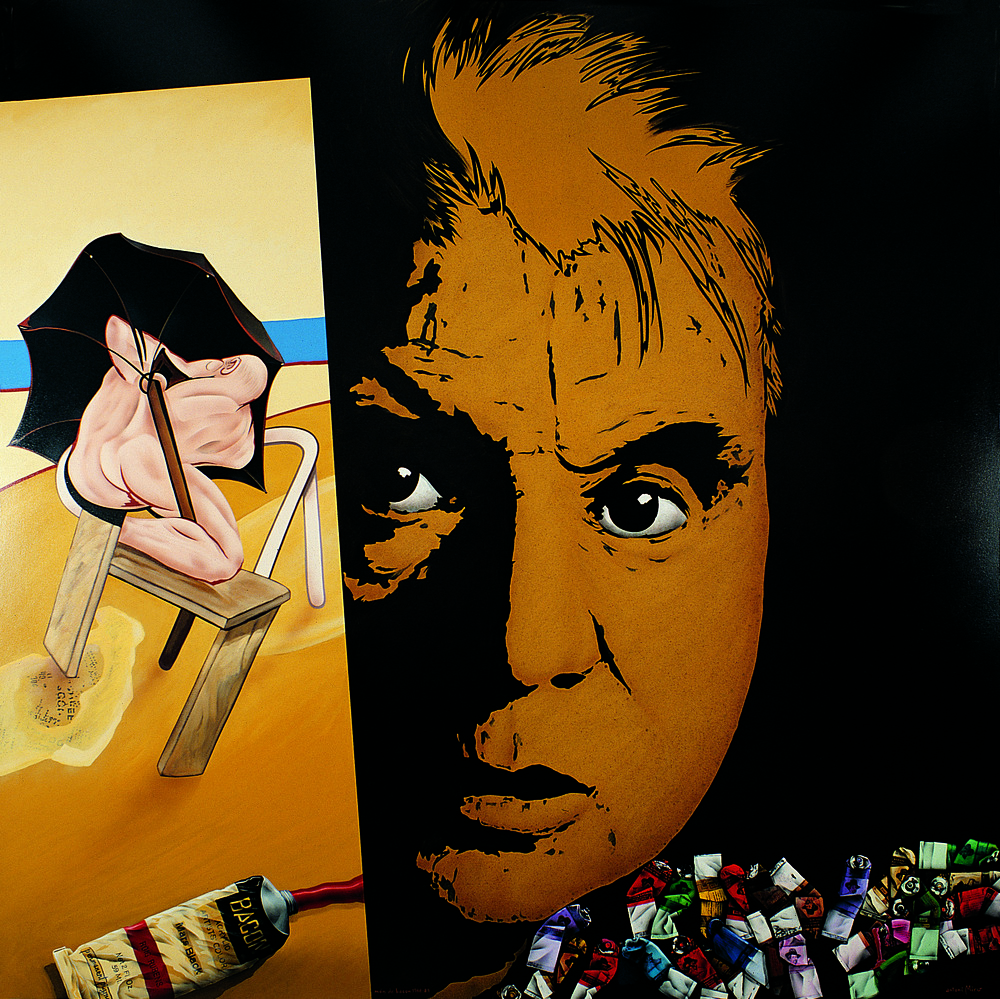Món de bacon (Bacon’s world)
In the “Pinteu Pintura” (Paint Painting) series, Antoni Miró took iconic works from Art History to come up with his own formulations, whether of a critical-political nature or as homage to an ‘Old Master’. Here, Miró’s canvases cover works, and also painters. In the latter case, he depicted both the artists and their works to create an aesthetic world, that of the artist to whom Miró refers.
The world of Bacon epitomises the dynamic aspect of pain. The disturbing nature of Bacon’s figures and the harsh corporeality with which they are depicted prove this. The fragment included in the work is the left-hand panel of the last of Bacon’s ‘black triptychs’, painted in 1974 to commemorate the suicide of his lover in a Paris hotel three years earlier.
Miró’s work suggests Bacon’s world through his paintings in three ways. The first is through a recreation of one of Bacon’s works — the aforementioned panel of the triptych, which also occupies a strip on the left-hand side of Miró’s painting. There are various differences from Bacon’s original, apart from the change in scale, such as the colour of the sea and the sky. The second is an ironic reference to Bacon’s painting, with a tube of red acrylic paint labelled as ‘Rubens red’. The third resort is provided by the empty tubes of paint. Taken together, the three elements remind us of the Irish painter’s works. In fact, they might be considered metaphors for the raw materials of art, the creative process and its results.We can also find the portrait of Bacon, which can evoke some of his personality traits. The portrait is monochrome, painted in darkish ochre on a black background — except for the eyes, which are picked out in white. This inverts the colour combination between the background and the figure which corresponds to the pitch-black sunshade situated on the beach in the triptych panel. The portrait of Bacon is positioned in the centre of the painting and occupies much of the canvas. He seems to poke out from slightly behind the triptych panel and above the used paints — an aesthetic approach that stresses Bacon’s role as an agent that encourages this transition between the means and the purpose.
Santiago Pastor Vila
